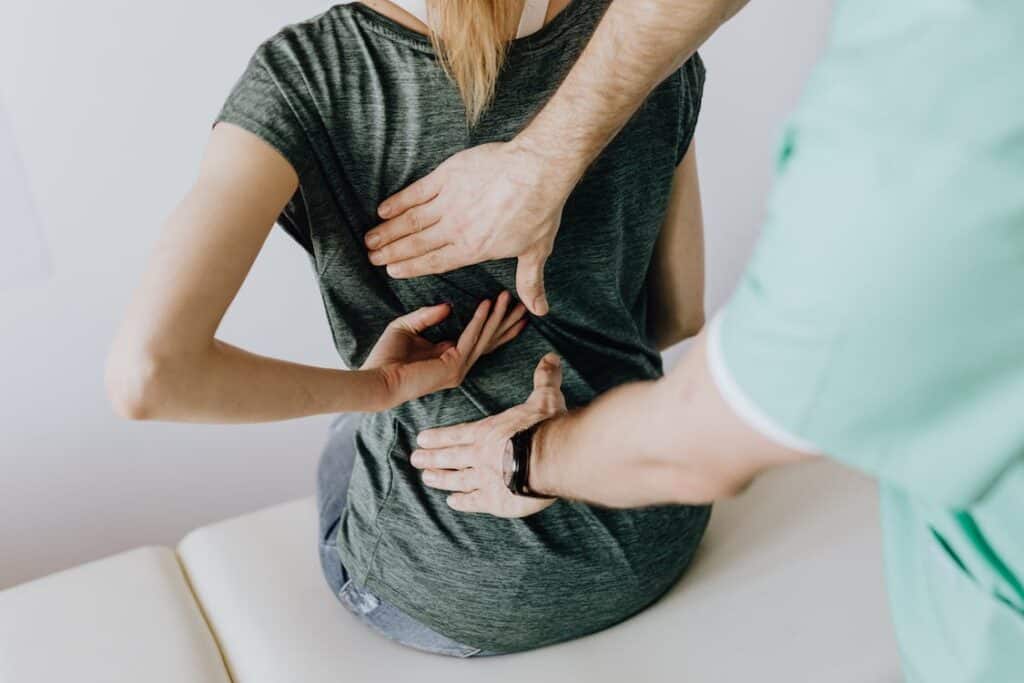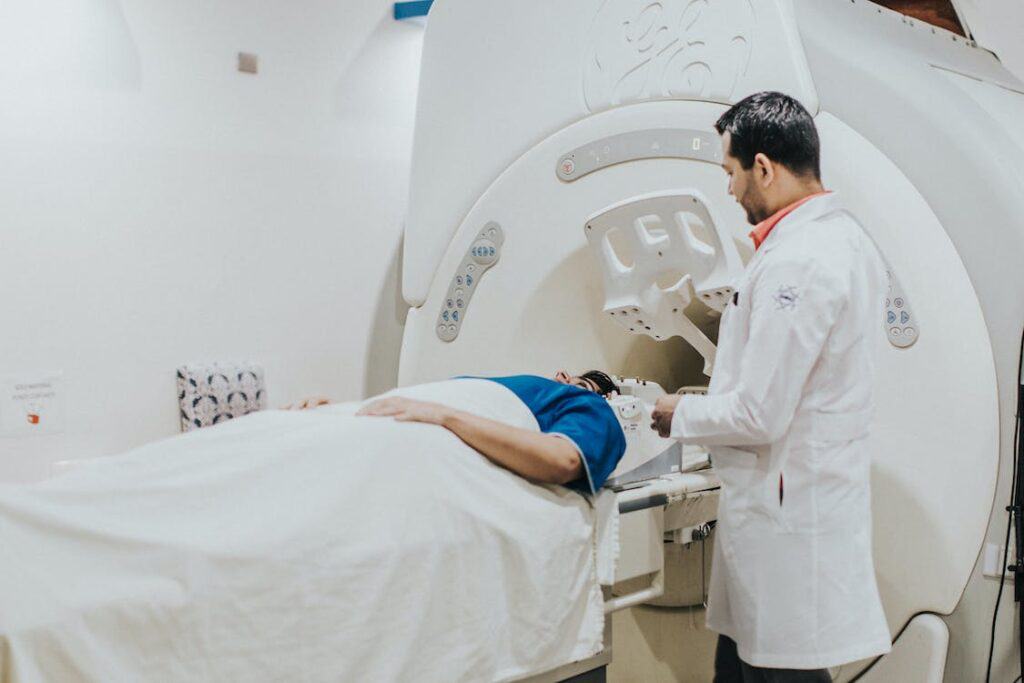Back pain can stem from a multitude of factors, including mechanical issues with the spine, inflammatory conditions, medical ailments, and lifestyle choices, making it a complex and diverse medical concern. Consulting an orthopaedic surgeon is essential because their specialized expertise allows for precise diagnosis and tailored treatment plans, ensuring that the root cause of back pain is identified and addressed effectively, leading to better outcomes for patients. In Singapore, chronic lower back pain treatment is available for
Back pain is a prevalent issue in modern society, affecting a significant majority of adults, with estimates ranging from 60-90% people experiencing it at some point in their lives. This risk is particularly pronounced among males and those engaged in manual labor. The shift towards remote work, increasingly common in today’s world, has given rise to a different kind of health concern – a pandemic of back pain. Remote work often involves prolonged periods of sitting in front of computers, combined with reduced physical activity, leading to weight gain and muscle loss, which can increase the risk of subtle, insidious damage to the back. Extended sitting also elevates the forces exerted on the lower spine, making injuries more likely. Pain in the lower back and buttocks can range from persistent discomfort to sudden, intense agony, arising from various factors such as mechanical issues in the spine, spinal discs, muscles, ligaments, or tendons. Additionally, inflammatory conditions like rheumatoid arthritis and medical conditions including osteoporosis, fibromyalgia, kidney stones, infections, endometriosis, and tumors are common contributors to back pain.

(https://www.pexels.com/photo/doctor-examines-woman-s-back-4506109/)
Symptoms associated with back pain can manifest in various ways. Buttock pain is often linked to back issues, typically stemming from worn-out facet joints in the spine, resulting in referred pain due to shared nerves. However, buttock pain can also originate from muscle strains in the buttock area. Shooting pain down the leg, commonly known as sciatica or radicular pain, is frequently caused by the narrowing of nerve passages in the spine. This narrowing can occur due to disc damage or osteoarthritis of facet joints, resulting in pinched nerves and a sensation often described as electric or lightning pain that travels down the leg.
Furthermore, pinched nerves in the spine not only lead to pain but can also cause leg or foot numbness and weakness. This may sometimes become so severe that patients experience significant numbness in the foot or severe weakness in the lower leg muscles, leading to a condition known as foot-drop. In cases of severe spinal canal narrowing, leg cramps can occur, especially during walking, and are relieved by sitting down.
Additionally, tingling, burning, or sensations akin to insects crawling on the skin can result from nerve compression within the spinal canal, a condition known as paraesthesia. In rare and severe cases of disc injury, where the disc protrudes and presses on the nerves controlling bowel and bladder functions, loss of bowel and bladder control can also occur, a condition referred to as cauda equina syndrome.
Back pain can arise from various causes, broadly categorized into injury-related and atraumatic sources. Injury-related back pain often stems from accidents like motor vehicle collisions or falls, the scenarios that typically come to mind when thinking of back pain triggers. However, atraumatic back pain, which is more common, can occur without a specific accident, often resulting from seemingly innocuous actions like overreaching, bending to pick up an object, or even sneezing.
In certain cases, back pain may signal underlying issues such as infection or tumors developing within the spine. This is particularly concerning when accompanied by unexplained weight loss or fever.
When dissecting the sources of back pain, three primary components come into play, often intermingling to contribute to the overall discomfort experienced. Muscular back pain arises from the overexertion of the numerous muscles in the lower back, leading to an aching and cramping sensation. Discal pain, on the other hand, emanates from the intervertebral discs, the cartilaginous structures between spinal bones. A tear in the outer fibrous layer of the disc, known as the annulus fibrosus, results in sharp pain and raises the risk of disc protrusion. Lastly, facet joint pain arises from discomfort in the spinal joints, termed facet joints, which can deteriorate over time, causing both back pain and discomfort in the buttock region. Understanding these distinct sources is essential in diagnosing and effectively addressing back pain.

(https://www.pexels.com/photo/doctor-examining-patient-on-mri-machine-15277954/)
During a consultation, the orthopaedic surgeon usually begins with a thorough medical interview to understand your back pain symptoms and their underlying causes. Subsequently, a detailed examination will be performed on your back and related areas to identify any signs of back-related issues. Following this assessment, your orthopaedic surgeon will recommend further diagnostic tests such as X-rays or MRI scans to precisely pinpoint the root cause of your back pain. Armed with this comprehensive information, you will be provided with a clear diagnosis of your condition so you can engage in a detailed discussion of potential treatment options.
The approach to treating back pain prioritizes addressing the underlying condition. There is a comprehensive range of options, both surgical and non-surgical, and collaboration with a specialized team of professionals dedicated to managing patients’ back-related issues. Treatment modalities encompass various approaches, such as:

(https://www.pexels.com/photo/woman-doing-warrior-pose-6787162/)
Some would recommend chiropractic treatment for lower back & buttock pain. This is an alternative form of treatment that involves manipulation and adjustment techniques for the musculoskeletal system. It is a complementary form of care that aims to alleviate symptoms of pain. Seeking assistance from an orthopaedic surgeon for lower back and buttock pain is crucial to ensure accurate diagnosis, effective treatment, and preventive measures are employed promptly, preventing the condition from worsening, and improving overall quality of life.
Orthopedic surgeons prioritize non-invasive treatments for lower back and buttock pain due to their lower risk, cost-effectiveness, and reduced disruption to patients’ lives. These treatments include physical therapy, medication, and lifestyle modifications. However, in severe cases where non-invasive options fail to provide relief, invasive treatments such as surgery or nerve blocks may be necessary, taking into account the patient’s medical history and preferences.
The recommended exercises for lower back pain depend on the individual’s specific condition, lifestyle, and advice from an orthopedic surgeon as part of their treatment plan. These exercises are tailored to address the underlying causes, such as muscle weakness, poor posture, or spinal issues, and should be personalized for each patient’s unique needs.
Yes, there are several lifestyle modifications that can help reduce the risk of lower back pain episodes. These may include maintaining a healthy weight, engaging in regular exercise to strengthen core muscles, practicing good posture, using ergonomically designed furniture and equipment, and avoiding prolonged periods of sitting or standing.
Generally, individuals with lower back pain should consider modifying these activities, seeking guidance from an orthopaedic surgeon or physical therapist to ensure proper form and technique, and gradually incorporating them back into their routine as their condition improves to minimize the risk of exacerbating their pain.
An X-ray or MRI scan may be necessary to accurately diagnose the specific cause of lower body discomfort, as they can provide detailed images of the affected areas and help identify underlying structural issues or abnormalities.
The approach to treating back pain emphasizes addressing the underlying condition through a comprehensive range of options, including medications, lifestyle modifications, tailored physiotherapy, pain procedures, and surgical interventions when necessary.

Dr Yong Ren graduated from the National University of Singapore’s Medical faculty and embarked on his orthopaedic career soon after. Upon completion of his training locally, he served briefly as an orthopaedic trauma surgeon in Khoo Teck Puat hospital before embarking on sub-specialty training in Switzerland at the famed Inselspital in Bern.
He underwent sub-specialty training in pelvic and spinal surgery, and upon his return to Singapore served as head of the orthopaedic trauma team till 2019. He continues to serve as Visiting Consultant to Khoo Teck Puat Hospital.
Well versed in a variety of orthopaedic surgeries, he also served as a member of the country council for the local branch of the Arbeitsgemeinschaft für Osteosynthesefragen (Trauma) in Singapore. He was also involved in the training of many of the young doctors in Singapore and was appointed as an Assistant Professor by the Yong Loo Lin School of Medicine. Prior to his entry into the private sector, he also served as core faculty for orthopaedic resident training by the National Healthcare Group.
Dr Yong Ren brings to the table his years of experience as a teacher and trainer in orthopaedic surgery. With his expertise in minimally invasive fracture surgery, pelvic reconstructive surgery, hip and knee surgery as well as spinal surgery, he is uniquely equipped with the tools and expertise necessary to help you on your road to recovery.
Lorem ipsum dolor sit amet consectetur adipiscing elit ut arcu a dignissim suscipit non ac eget tellus in nisl mauris nec.
